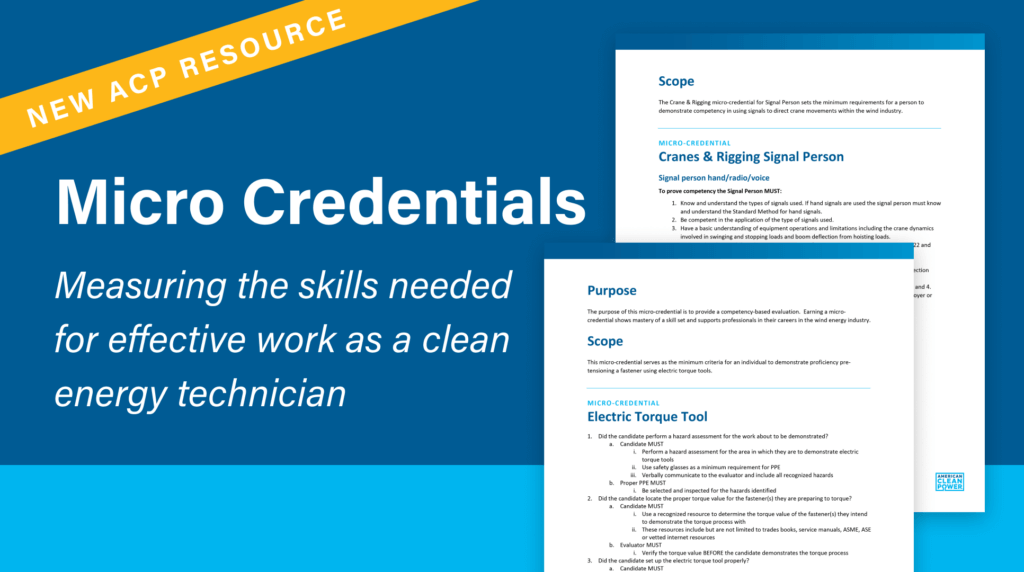Best Practices To Reduce Risk & Protect Your Assets
The Inflation Reduction Act (IRA) will boost wind, solar, and storage and now is the time to protect assets.
The US wind and solar industries have received a boost with the introduction of the Inflation Reduction Act (IRA), which includes numerous measures aimed at incentivizing investment in renewable energy.
The American Clean Power Association (ACP) has described the Act as the “single largest investment in renewable power in the history of this country, and the largest investment in climate action to date.”
It is predicted that solar will represent 54% of the new US utility-scale electric-generating capacity added in 2023, equating to 29.1 GW while battery storage should be able to deliver 17%, and wind 11%.
How the Act will impact wind
The Act extends the production tax credit and investment tax credit for wind – and solar – until 2024 before transitioning to a technology-neutral tax credit that will remain in place until 2032 or when electric-sector emissions fall to 75% of 2022 levels, whichever is later.
From the perspective of wind, before the enactment of the Inflation Reduction Act, the Production Tax Credit (PTC) for wind projects was available only to facilities that began construction (or Safe-Harbored) before 1 January 2022. The IRA extends the PTC to wind projects that begin construction before the end of 2024.
In 2023, it is expected that 6.0GW will be added to the annual US utility-scale wind capacity.
How the Act will impact solar
The Act provided a timely boost for the US solar industry. It includes long-term solar and storage tax incentives, as well as investments in domestic solar manufacturing.
Provisions in the IRA include significantly expanding US tax credits for solar projects – the revised PTC provides a base credit of 0.5 cents per kilowatt hour (KWh) of electricity produced. For wind and solar projects that satisfy the applicable wage and apprenticeship requirements, the credit rate would be extendable up to 2.6 cents per KWh. With also hitting bonus levels for: Domestic Content, Energy and low income communities.
Following a year of disruption due to supply chain and pandemic challenges, 2022 projects are likely to come online at the same time as 2023 projects delivering 29.1 GW of utility-scale solar capacity.
According to ACP, “Including these stable policies in the IRA…will finally unleash the full economic potential of swiftly deploying wind, solar, energy storage and transmission – and our industry is ready to deliver.”
How the Act will boost battery energy storage
With such incentives, the wind and solar industries will see the number of farms increase dramatically. ACP’s preliminary assessment of the Act concluded that it would deliver an estimated 525 to 550GW of new, utility-scale clean power during the period 2022-2030.
The ACP added: “With stable policies in place, we expect annual wind, solar, and energy storage capacity installations to grow to over 90 GW by the end of the decade, more than tripling the 28 GW installed in 2021.”
Interestingly, more battery storage capacity will be developed in 2023 than wind capacity with a 9.4 GW forecast to be added to the existing 8.8 GW of battery storage capacity.
Why and how to protect assets
Such rapid expansion will command higher focus on fire risks as operations, maintenance, and production needs increase exponentially. While fires in the renewable sector are rare, as more wind, solar farms, and battery storage units come online, the industry needs to remain diligent to prevent occurrences from rising as deployment expands.
While infrequent in the renewable energy sector, when they do happen, fires represent a real danger to site personnel and the environment, as well as being costly to the owners and operators. Additionally, public perception could quickly move from being in favor of wind and solar to being against it if fires increase in frequency.
A very effective way to mitigate risks, is to undertake a proper fire risk assessment (FRA) to ensure on-site detection and suppression technology is fitted at the time of installation. By being proactive, operators can earn the trust of investment, insurance companies, and the local community from the word go.
Fire suppression systems are not just available during manufacturing or construction, the technology can also be retrofitted to existing live units. Automatic fire suppression systems like Firetrace automatically target specific ignition sources allowing a flexible, modular approach that can be customized for different makes and models of wind turbines, solar inverters and energy storage units.
Learn more about how automatic fire suppression systems work.
This is a guest blog post from ACP Member Firetrace International. To learn more information on how to become an ACP member, please visit our membership page.




